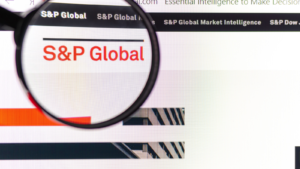
Regarding the best stocks to buy, some investors look to analyst consensus stocks — companies that everyone on Wall Street fawns over.
I did a quick Finviz.com screen of S&P 500 companies. The lowest rating from analysts — the lower, the better — was 1.50 for DexCom (NASDAQ:DXCM), a maker of glucose monitoring systems. The highest was a tie among four companies, each with a 3.50 rating.
The top 20 companies (including those that tied) rated between 1.50 for DXCM and 1.80. Of the 36 at 1.80 or less, healthcare had the highest representation with eight companies. Ten of the sectors used by Finviz had at least one stock.
The question is, which three to pick? They’re all so popular with analysts.
Since it’s my article, I’ll go with stocks in the energy, industrial and financial sectors. Two of the three I’ve recommended in 2023. The other, I don’t believe I’ve ever discussed before.
Targa Resources (TRGP)

Targa Resources (NYSE:TRGP) has been a favorite energy stock of mine in 2023. I’ve recommended it on at least three occasions, the most recent in mid-July, as part of a trifecta of dividend stocks to buy for the long haul.
As I said in my article, of the 19 analysts that cover its stock, 17 rated it a Buy, while the other two gave it an Overweight rating. The stock has no Hold or Sell ratings. The average target price of $99.82 is 27% higher than where it’s currently trading.
The midstream energy business generates most of its revenue from the Permian Basin, quickly becoming the breadbasket of American energy production. What makes its dividend so attractive — its annualized dividend of $2 yields 2.5% — is the stability of it.
The company generates 85% of its revenue from fee-based contracts, growing its adjusted earnings before interest, taxes, depreciation and amortization (EBITDA) by more than 62% over the past year.
Its shares are up 52.5% over the past five years, double Exxon Mobil’s (NYSE:XOM) return over the same period.
Jacobs Solutions (J)

Jacobs Solutions (NYSE:J) is the stock of the three that I don’t believe I’ve ever discussed on InvestorPlace.com. I selected it because my wife owns a construction company. It makes sense that I should follow what’s happening in it.
To say that Jacobs is just a construction company is like saying that Amazon (NASDAQ:AMZN) is just an e-commerce business. That couldn’t be further from the truth.
Although it started in 1947 with engineer Joseph J. Jacobs, selling consulting services to construction companies and other infrastructure-type businesses, it has become a project manager with over $15 billion in revenue generated by more than 60,000 employees worldwide, working on some of the most significant and most complex projects.
Of the 19 analysts that covered its stock, 12 rate it a Buy, another six rate it Overweight, and one has it as a Hold. The average target price of $148.21 is 21% higher than its current share price.
Jacobs is in the middle of transforming its business to create more shareholder value. It’s trying to build higher-growth, higher-margin companies focusing on critical infrastructure projects and their sustainability.
In May, it announced that it would separate itself into two companies. One would be its Critical Mission Solutions (CMS) business. It focuses on providing services to government agencies. As a result of the separation, it will become a pure-play provider of government services with $4.4 billion in annual revenue and more easily valued by investors.
Chief Executive Officer (CEO) Bob Pragada and the board believe that addition by subtraction is good for shareholders. While the news has yet to excite investors, once completed, investors should expect its share price to go on its next leg higher.
S&P Global (SPGI)

S&P Global (NYSE:SPGI) stock has performed well over the past five years, up nearly 100%, but it hasn’t come without some volatility.
In 2021, its share price gained 44%, only to be followed up with a 39% decline through the first 10 months of 2022. In the nine months since, it’s gained back most of 2022’s losses.
For investors who don’t mind a little volatility, SPGI is the perfect stock to own for the long haul, adding to your position whenever it has one of its temporary corrections. Since Doug Peterson became CEO on Nov. 1, 2013, its stock gained 494%, considerably higher than the S&P 500.
Peterson is diligently working to get the company best known for its Indices business back to generating industry-leading margins and profitability. Analysts have taken notice.
In recent weeks, at least three analysts covering SPGI stock have raised their price targets.
On July 12, Raymond James analyst Patrick O’Shaughnessy upped his target by $8 to $421. He has an outperform rating on the stock. A more noticeable bump in price came from UBS analyst Kramm; he raised its target price by $40 to $460, well above where it’s trading. Morgan Stanley analyst Toni Kaplan also slightly adjusted higher, increasing her target by $7, to $427, with an Overweight rating.
Overall, 24 analysts cover its stock, with 22 giving it an Overweight or outright Buy, with no Sell ratings. It has an average target price of $440.71.
In October 2021, I recommended investors buy SPGI for the next 15 years. Nothing’s changed. It’s still a long-term buy.
On the date of publication, Will Ashworth did not hold (either directly or indirectly) any positions in the securities mentioned in this article. The opinions expressed in this article are those of the writer, subject to the InvestorPlace.com Publishing Guidelines.




